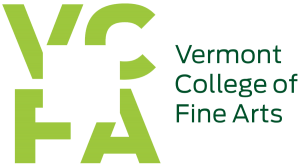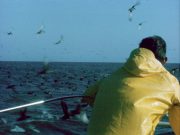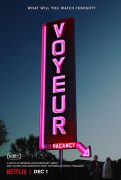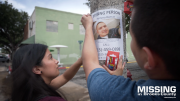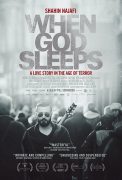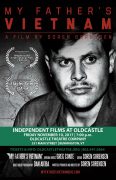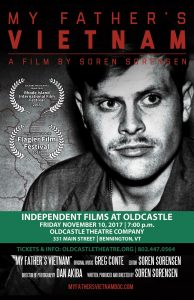The Voyeur, Revealed: An Interview with co-directors Josh Kuory and Myles Kane, PART I
Voyeur follows Gay Talese — the 84-year-old giant of modern journalism — as he reports one of the most controversial stories of his career: a portrait of a Colorado motel owner, Gerald Foos. For decades, Foos secretly watched his guests with the aid of specially designed ceiling vents, peering down from an “observation platform” he built in the motel’s attic. He kept detailed journals of his guests’ most private moments — from the mundane to the shocking — but most of all he sought out, spied on, and documented one thing: strangers having sex. Talese’s insatiable curiosity leads him to turn his gaze to a man accustomed to being the watcher, exploring a tangle of ethical questions: What does a journalist owe to his subjects? How can a reporter trust a source who has made a career of deception? Who is really the voyeur?
Voyeur, co-directed by Josh Kuory and Myles Kane, premiered at the 55th New York Film Festival in October 2017 and will be launching on Netflix December 1, 2017. Koury, an alumnus of the Vermont College of Fine Arts MFA in Film program, worked on this film as part of his thesis project while attending VCFA.
An excerpt of this interview has been published on New England Film.
Aja Zoecklein: Having seen an earlier version of the film, and now having seen the final version, I was blown away by the differences: how tight the final cut felt and how much more compassion I had towards the players, especially the Voyeur. Can you talk about your editing process over the last year or so to help the story along?
Josh Kuory: The biggest changes that we made, besides general tightening up and refining, was adding additional visual treatments: some more recreations, and a little bit more on the miniatures. Mostly to help get us into the mindset of the characters–especially Foos in the attic and connecting him to that world a little bit, almost as if living in his head. We also added a lot more around when the miniature set starts to fall apart to reflect the overall arc of what is happening in the story. On top of that, we had the opportunity to work closely with Netlix and got the film in front of a lot more people to start that feedback and refinement process.
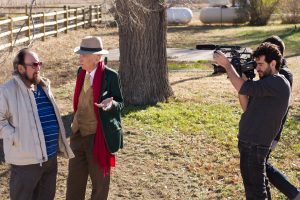
AZ: To borrow from a line in the film, “when you hold onto stories, things change.” You spent years of your lives with Talese and Foos and there really seemed to be a sense of friendship and camaraderie amongst you all — at one point, Foos says “I love you guys.” While there are multiple layers, the film is really about the relationship of these two–very real — humans, and to the juxtaposition of parallel lives in a specific point of time. How did the act of making this film change the story for you, or did it?
Kuory: Just generally in the way that Myles and I work as co-directors… my wife, Trisha Kuory, the producer for the film, and I, we were spending a lot of time with Gerald and his wife, Anita, and then Miles spent a lot time with Gay. So, I’ll just talk a little bit about our experience with Gerald. It’s sort of like what happened in the film, the more we get to know Gerald the more we started to understand him and empathize with him. Not forgive him for what he did, because I think that’s unforgivable, but just sort of understand him and understand the dynamic between him and Anita –who is, as far as I’m concerned, the most innocent, and likeable, and interesting…that’s just me maybe, but I don’t know…
Myles Kane: No, it’s definitely not just you. I mean she’s like the star at every festival. I think she’s a conduit for the audience because she’s an innocent, and obviously the smallest personality in the room. I think some of her comments are surprising, but also sort of cathartic because she often says ultimately what’s actually going on and speaks truthfully, even if it’s just calling her husband a creep. She’s the human empathetic face that the audience needs.
You mentioned, working with these “two humans”– I think that’s a good way to put it–because that’s definitely how Josh and I always like to try to approach our characters in production, approaching them as “humans,” meaning they’re flawed, they’re real people. In the edit we weighed them both equally. The nature of the format is you expect the subject to be portrayed as the victim and the journalist as the perpetrator, but we weighed them equally, and they’re both flawed and both likable in some ways. It was definitely a challenge, but I think that’s why it took four plus years to make this film, it takes time to peel back the layers.
AZ: Talese writes, “Most journalists are restless voyeurs who see the warts on the world, the imperfections in people and places.” The most compelling aspects while viewing this film were the times where you and your team are visibly present, either in reflective glimpses (Foos’s glasses, a window, a computer screen) or in that tense scene with Talese near the end of the film where we can hear you in dialogue with your subjects. Did you know early on that your role needed to be present in the film for the most impact, or did it evolve into necessity?
Kuory: Our filmmaking style is very much to record and to capture as much as possible, in order to give us a lot of different options to layer the story or discover new angles in the story during our post-production. So we had a lot of footage that included us, partly just because of how we shoot, and to some degree, by accident. Very late in the process we discussed amongst some of our creative peers the idea of bringing ourselves in as a third layer of voyeurism, the audience then being the fourth layer. Once we started to realize that we were integral to the story we felt it was our duty, or not our duty really, but just that it was important to implicate ourselves here too, because we’re not blameless either.
Kane: Everything we’re hearing about Gay Talese’s career and his approach to journalism is a constant echo to what we do. It was just so clear that we’re all cut from the same cloth in terms of our desire to try to portray the truth, dramatize the truth, make these works out of non-fiction. Like Josh said, it became necessary at some point. If we if we’re going to make this sort of somewhat critical movie about a journalist, successes and flaws, we need to certainly tip our hat to the fact that we are maybe guilty of the same things.
AZ: I loved this idea of toying with perspective, who is looking in/who is looking out… you achieved this truncated POV visually by obstruction and looking through things, as well as camera angles. Can you talk a little about manipulating visuals to convey greater meaning and metaphor?
Kane: Similarly to what I was talking about with the whole kind of journalism parallel, the camera here is obviously the ultimate voyeuristic tool. We, as documentarians, and people in general, are so aware of the camera which for some reason seems to have more power than just the eyes. Stylistically there certainly was a choice in terms of shooting–in both their houses, they are both collectors, there is just so much stuff!–it presented itself naturally that you would constantly see them surrounded by many things, or be able to look at them through things. In the edit it proved to be a great element because our film is not a heavy handed essay, we are mostly letting our character tell their own story. So, that was sort of a subtle way for us to make this commentary without using sound bites from other people or other mechanisms to convey the point. It weaved the layers together underneath the main storyline.

AZ: The miniature model of the motel was an essential component to telling Foos’s perspective of omnipotence in a way that literal reenactments would not have effectively been able to. How did the idea come about?
Kane: While we hoped this would be a present day story, we knew early on that a big part of it was past-tense, and we would need to have some sort of recreation happen. Reenactments are par for the course with documentaries, but as a result, are also open to criticisms. We were very conscious of not wanting it to stick out or feel overly falsified or dramatized. So that was the first thing, and then we also really wanted to have something that felt like it was it was more than wallpaper so to speak, not just this kind of literal visualization. The miniature thing came up after we had seen these photos stills of miniatures in crime scene photography and there was something attractive about bypassing using actors to play every moment. Being that the motel itself was sort of a character in the movie, we thought, why don’t we just use the architecture and the space as sort of the main set and use props and lighting and all that to invoke? Knowing that Gay and Gerald are such good storytellers we knew that we could, luckily, rely on them a lot to tell the story. They are both very colorful speakers.
Kuory: Right, and as the film progresses, the model–this perfect memory that they have–is starting to fall apart at the seams and becomes more fragile. And you realize that the model stands in for the truth of the story in many ways…
Kane: Truth can be elusive. Certainly it would feel solid. You think it’s one thing and then you realize it’s not, it’s a model. It speaks to the artificiality of facts, how they can so easily just suddenly dissipate.
Stay tuned for Part II of this conversation! Voyeur premieres on Netflix December 1st, 2017, don’t miss it!Nike air jordan Sneakers | Sneakers
